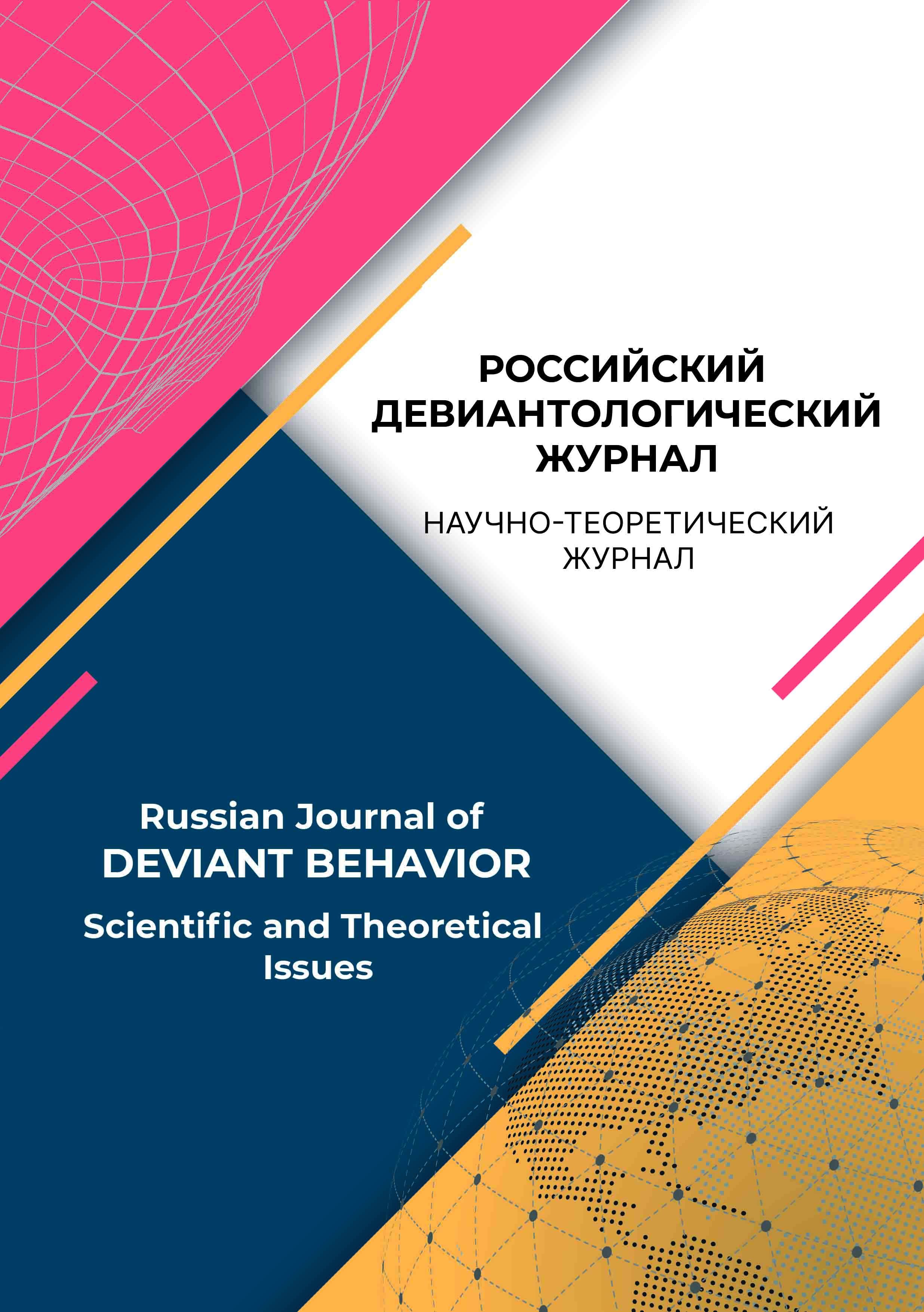from 01.01.2019 until now
Minsk, Belarus
The article reveals the essence of a suicide note as an object of forensic authorship examination conducted in order to make a psycholinguistic profile of the author of the text based on his appearance characteristics (age, gender, professional affiliation, etc.). The importance of such examination in the investigation of murders is underlined, when it is required to reveal the fact of staging a murder as a suicide, when the text of the suicide note is one of the evidence sources in covering the crime up. The author points out that both the texts of "false" suicide notes and the texts of originate suicide notes have their own psycholinguistic features (structural, grammatical, morphological, etc.) that make it possible to sketch the writer’s speech profile. The research reveals that the text of a suicide note is written by a person in order to verbalize his emotional experiences in a certain depressive state. It should be noted that earlier the text of a suicide note was made by hand and it had a personal addressee, the main research methods were mainly cognitive. Currently, due to the development of Internet communication, linguostatistical methods are increasingly used. That permits to make a human profile based on a set of quantitative features in the text of a short electronic message published in the open access and having an interpersonal addressee.
forensic authorship, psycholinguistics, suicide note, cognitive methods, statistic methods, online-communication
1. Babuk, A. V. (2021). Metodika provedeniya sudebnoj avtorovedcheskoj ekspertizy v zarubezhnyh stranah. Sudebnaya ekspertiza Belarusi, 2 (13), 63-67.
2. Karaeva, A. A. (2020). Analiz zarubezhnogo opyta vyyavleniya i ocenki ubijstv, inscenirovannyh pod samoubijstvo. Vo¬prosy nauki i obrazovaniya, 3 (97), 46-54.
3. Leont’ev, A. A. (2003). Osnovy psiholingvistiki. Moskow: Smysl; Saint Petersburg: Lan’.
4. Litvinova, T. A. (2016). Diagnostirovanie sklonnosti lichnosti k suicidal’nomu povedeniyu na osnove analiza ee rechevoj produkcii: metody i podhody. Vestnik Marijskogo gosudarstvennogo universiteta, 2 (22), 57-61.
5. Panina, N. A. (2020). Diagnostika emocional’nogo sostoyaniya avtora kak zadacha sudebnoj avtorovedcheskoj ekspertizy. Vestnik Nizhegorodskogo universiteta im. N. I. Lobachevskogo, 3, 149-153.
6. Shnejdman, E. S. (2001). Dusha samoubijcy (per.s angl.). Moskow: Smysl.
7. Atekah, A. (2020). An Investigation of Suicide Notes: An ESP Genre Analysis. International Journal of Applied Linguistics & English Literature, 9 (3), 1-10.
8. Burnap, P., Colombo, G., & Scourfield, J. (2015). Machine Classification and Analysis of Suicide-Related Communication on Twitter. Proceedings of the 26th ACM Conference on Hypertext & Social Media, 75-84. https://doi. org/10.1145/2700171.2791023
9. Fata, I. A. (2021). The characteristics of linguistic features enfolded in suicide notes. Journal of Language and Linguistic Studies, 17 (2), 720-735.
10. Galasińsky, D. (2017). Discourses of Men’s Suicide Notes: A Qualitive Analyses. London-Oxford-Nework-Bew Delphi-Sydney.
11. Ioannou, M. (2014). Genuine and simulated suicide notes: An analysis of content. Forensic Science International, 245, 151-160.
12. Jaafar, E. A. & Jasim, H. A.-S. (2022). A corpus-based stylistic analysis of online suicide notes retrieved from Reddit. Cogent Arts & Humanities, 9 (1). https://doi.org/10.1080/23311983.2022.2047434
13. Schneidman, E. S. (1956). Clues to Suicide. Public Health Report, 71 (2), 109-114. https://doi.org/10.2307/4589373
14. Triana, Y. (2020). Language Features and Causes of Suicide Case from Forensic Linguistics Point of View. International Journal of Psychosocial Rehabilitation, 24 (6). 7955-7966.
15. Zaśko-Zielńska, M. (2022). The Linguistic Analysis of Suicide Notes. In V. Guilĺen-Niero, D. Stein (Eds.), Language as Evidence. Doing Forensic Linguistics (pp. 373-417). London: Palgrave Macmillian.














